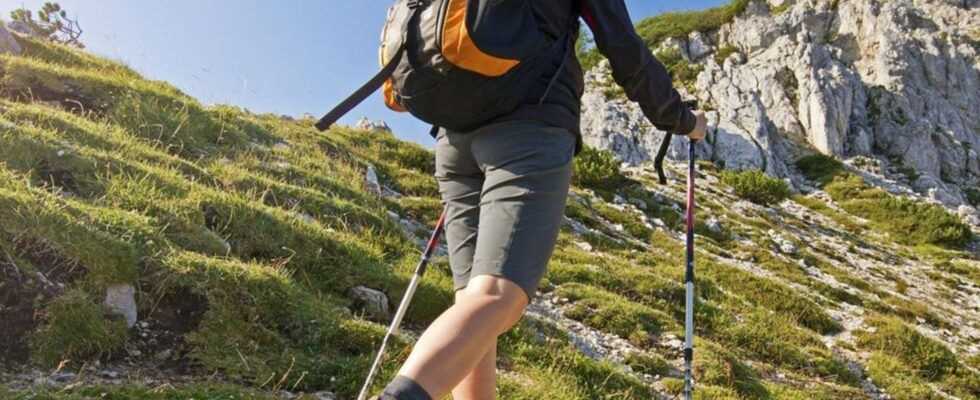Pleasant temperatures, colorful forests and sunny peaks: mountain fans now get their money's worth. Hikers should have these things with them.
Summer is drawing to a close. However, many outdoor fans do not put their backpacks in the basement, because autumn is the ideal season for hiking. No wonder: Pleasant temperatures, colorful forests and sunny peaks await hikers. While veterans know exactly what goes in their backpack, beginners are often overwhelmed by the oversupply in sports shops. You really need that.
Good shoes and the right socks
The right footwear is essential when hiking. We advise against sneakers or even sandals. Because on slippery stones, roots and gravel, light shoes offer little grip and increase the risk of accidents. For this reason, hiking shoes should have good soles and reach over the ankles, regardless of whether they are on short or long tours. This ensures a secure footing and you don't bend over so quickly. Hiking boots should fit like a glove so that the wearer has a safe step and does not get blisters.
In addition to the best shoes, the right socks are important. These should be a little thicker and higher than the shoe. Otherwise the hiking shoe rubs and blisters will form. It is best to use trekking socks that have special padding on the toes and heels.
It all depends on the right clothing
Climbing mountains with jeans is no fun. The rough fabric rubs over time and freedom of movement is severely restricted. That is why it is worth investing in hiking pants. It is breathable, light and will last for a few years with good care. A functional shirt completes the hiking outfit.
Be sure to pack a warm sweater or fleece jacket in autumn. Because at higher altitudes the temperature is usually lower than in the valley. If you don't want to freeze on the summit in your sweaty top, you can take a spare shirt with you. On longer stretches, hikers should also be prepared for rain and have packed rain pants and a rain jacket.
Essential accessories
To protect yourself from the sun, a cap is ideal. Sunglasses are also part of the mountain equipment, so that the eyes are protected from UV radiation. Even with light cloud cover, sunscreen is essential on the mountain: for every 1,000 meters of altitude, the UV exposure on the skin increases by ten percent. The German Alpine Club recommends a sun protection factor of over 25. In addition, think of gloves and a hat in autumn.
Backpack and other companions
To conveniently stow all of this, a backpack is the best choice. Backpacks with a capacity of 25 to 30 liters are ideal for a day tour. When buying, make sure that the back is breathable and well padded. It should also fit well and be water-repellent. Hiking poles are perfect for relieving the strain on the knee joints when going downhill and provide additional support when the stones and paths are slippery.
The right food
It is particularly important to have enough water with you on the hike. Alternatively, unsweetened herbal teas are suitable. The best thing to do is to take a water bottle with you, which summiteers can refill at springs on the way. The German Alpine Association recommends that you expect at least two liters per person on a medium-difficult day tour.
Those who are on their feet all day inevitably get hungry. Fruit or energy bars take up little space in the backpack and provide energy quickly. Most of the hiking trails have farmed alpine pastures along the route. Hungry people can refresh themselves there – so have some money with you. In autumn, however, always inform in advance whether the alpine pastures are still open.
Everything for security
In order not to lose orientation, navigation systems are advisable, such as a GPS device or a smartphone with a corresponding app. However, you don't have reception everywhere in the mountains and the battery runs out at some point. "Alpenvereinaktiv", the app of the German Alpine Club, offers, for example, map material that also works offline. It is also advisable to have a power bank with you on longer tours. If you don't want to rely on technology, take a hiking map of the region with you and draw the appropriate route.
A first aid kit is also part of the basic equipment. If worse has happened, the SOS-EU-ALP app can help. With the help of the app, hikers can make an emergency call. In addition to the telephone number, the app also transmits the location to the respective rescue control center.
